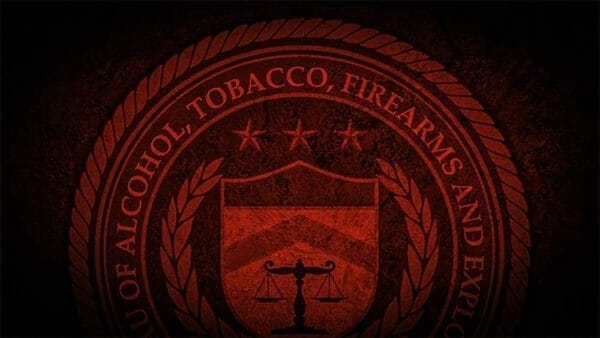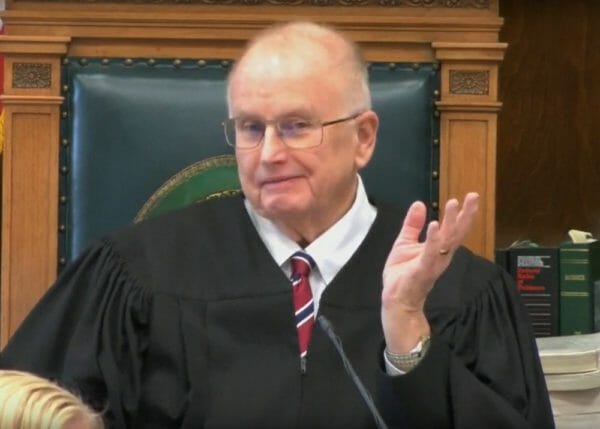
Despite what the media wants you to believe, not all murders are committed with firearms. Knives and what the FBI considers “cutting instruments” are used in roughly 10 percent of all killings. And there are no background checks on knives.
Murders involving firearms usually draw far more attention and scrutiny from the legacy media since a gun death always fits their narrative. Reporters fixate on the firearm itself and whether it was an “assault weapon” or had a standard-capacity magazine. The media thoroughly investigates where the firearm was purchased, whether the suspect could legally possess it, and whether they belonged to any political groups. When a firearm is not used in a violent crime, the media rarely reports the incident. This impacts law-abiding gun owners because of the false narrative it creates that only firearms are used in violent attacks.
Had Ariana Ptarcinski’s death involved a firearm rather than a knife on Christmas Eve 2021, maybe her killing would have received more scrutiny. It sure could have used some. Investigators and prosecutors never examined one critical piece of evidence. If they had, they would likely have made an arrest. As a result, the 18-year-old’s stabbing death remains unsolved, even though there was only one other person in Ariana’s bedroom that night she was killed: her 20-year-old boyfriend, Ramon Durst, whom she had been dating for less than a year.
Ariana’s autopsy report leaves little room for interpretation: She didn’t kill herself. Her cause of death is listed as “complications of stab wound of neck.” The manner of death was “homicide,” and that she was “stabbed by other(s).” Florida’s District Six Medical Examiner noted that the fatal stab wound was 1.5 centimeters long, on the left side of Ariana’s neck, approximately 20 centimeters from the top of her head, and 4.5 centimeters above the top of her left shoulder. She also had two cuts on the right side of the back of her head. One was 1.5 centimeters. The other was 2.5 centimeters. There were two faint bruises on her left forearm. The largest was 1.5 centimeters long. The bruises could have faded after Ariana was stabbed. She didn’t die immediately but lingered on life support for one day. Her parents made the decision to donate her organs after she was declared brain dead.
Christmas Eve 2021
Hernando County Sheriff’s Office Detective Chris Kraft, who is assigned to the Sheriff’s Crimes Against Persons unit, was the lead investigator in this case. His initial report includes a brief summary of the case:
“SYNOPSIS: For an unknown reason Ramon Calderon-Durst slit Ariana Ptarcinski’s throat while in Ariana’s bedroom and then took her into Edward and Judy Prarcinski’s (sic) master bedroom by her hair and stated to Edward and Judy, “I did this.” At this time the investigation is ongoing.”
According to his first report, Kraft arrived at the Ptarcinski home shortly after midnight on Christmas Day, 2021. Kraft first contacted two neighbors, Thomas and Melissa Lobianco. They told him they were placing presents under their Christmas tree when they heard someone scream, “I’m going to kill you!” They said they saw Ariana’s father Edward Ptarcinski screaming at Durst, saying “You killed my daughter!”
“Thomas advised that he then began to walk towards Edward and noticed Ramon charging towards Edward in an aggressive manner while covered in blood,” Detective Kraft’s report states. “Thomas stated that he did not know what Ramon’s intentions were towards Edward and punched Ramon on the side of Ramon’s head with his left fist. Thomas stated that Ramon bent forward as if he was going to fall down, but he did not. Thomas stated that he then punched Ramon once again with his fist, knocking Ramon to the ground. Thomas stated that he then returned back to his residence and told Melissa to call 911.”
Lobianco’s wife confirmed her husband’s statement. The detective then interviewed Ariana’s father, Edward Ptarcinski.
“Edward advised that after spending the evening with his family and his daughter’s boyfriend, Ramon for Christmas, they all retired to their bedrooms for the night. Edward stated that while in the master bedroom with his wife Judy he had gotten up to use the restroom at which time he noticed the entry door of their bedroom open and Ramon walking into the bedroom holding his daughter, Ariana by her hair stating, “I did this.” Edward advised that he noticed Ariana bleeding from the area of her neck and noticed that it her neck had been slit by unknown means. Edward then stated that he then began to scream for help,” Kraft wrote in his report.
Kraft then interviewed Ariana’s 12-year-old sister, Isabella Ptarcinski.
“Upon speaking with Isabella, she stated that she was awakened by hearing arguing, but could not make out what was being said. Isabella stated that as she exited her bedroom to see what was going on, she noticed Ramon carrying Ariana towards Edward and Judy’s bedroom by her hair. Isabella could not provide any further information or details,” the report states.
Ariana’s parents do not agree with this statement. Isabella did not hear arguing, they say.
The detective attempted to interview Durst at the scene, but he declined to make a statement.
“I then made contact with Ramon, who was detained in Deputy A. Dowdell’s patrol vehicle. I then attempted to obtain Ramon’s personal information but he would only provide me with his name, date of birth, and address and then made no further statements,” the report states.
Durst was taken to the Sheriff’s Office and placed in an interview room, which was equipped with a video recording system. Detective Kraft tried to interview Durst again at the Sheriff’s Office.
“Ramon was very emotional and upset. Ramon stated that he did not want to speak to me because he did not want to incriminate himself. Ramon did engage in conversation with me but appeared to be trying to obtain information,” Kraft wrote. “Ramon was never advised of his Miranda Warnings because he did not wish to talk about what occurred. He was not questioned about what happened. I observed Ramon who was wearing a white t-shirt and green shorts. His shirt was covered in blood. He had blood on his hands, arms, legs and face. Ramon had a cut on the left side of his neck. The cut appeared to have been caused by a knife and the injury was superficial. The cut may have been about three inches long. There appeared to be a second smaller cut above the first one. Ramon did have some cuts and scrapes on his shoulder, back, arms and legs.”
After deputies photographed Durst and collected his clothing and DNA samples, they drove him back to the Ptarcinski home, where he got his car keys and drove off.
Crime scene investigators recovered two knives from Ariana’s bed, as well as her sketchbook.
“A notebook was located in Ariana’s room. In the notebook, a drawling was located and dated 09/09/20. The drawling was of a female resembling the victim. The drawling depicted a female with her throat cut and blood coming out of her mouth and neck area,” Kraft wrote.
Two days after Ariana died, detectives received a letter from attorney Melissa Vickers, who told them she now represented Durst, and said she may arrange an interview. To date, and despite numerous email exchanges with his attorney, Durst has never consented to be interviewed by the Hernando County Sheriff’s Office.
No charges
Detective Kraft sent the case to the State Attorney’s Office for review. On August 22, 2023, Assistant State Attorney Peter Magrino notified Kraft in a letter that no charges would be filed. His decision, Magrino wrote, “is not based on the lack of quality of the investigation or any lack of investigative effort on your part.”
“As you know, Florida courts have historically held that acts of simple negligence cannot be made criminal regardless of the loss of human life without Mens Rea,” Magrino wrote.
Mens Rea is a legal term that translated from Latin literally means a “guilty mind.” It is the intention or knowledge of wrongdoing that constitutes part of the crime. It has been defined as the criminal intent that prosecutors must prove in order to prove that a defendant is guilty.
“As you know, Florida courts have historically held that acts of simple negligence cannot be made criminal regardless of the loss of human life without Mens Rea. The Medical Examiner has determined the manner of death to be homicide with the cause of death to be a complication of a stab wound to the neck. When the incident occurred, there were no eye witnesses in the bedroom. On scene investigation determined there no probable cause to arrest Ramon Durst,” ASA Magrino wrote in his letter to Detective Kraft. “Since that time, we have been in contact with his attorney in an attempt to have Durst provide a statement. As you know she was initially concerned over his mental status with his ongoing therapy. Later as the decedent’s family started a social media circus the attorney grew concerned for her client’s physical well-being given threats that were made. Although I advised the parents that they were not helping the situation their conduct continued to no avail. Thus, there is insufficient evidence to sustain any criminal charge as it relates to the death in this matter at this time.”
One week earlier, Magrino sent a similar letter to Ariana’s parents, but he left out the part about the “social media circus.”
“As I had discussed with you on prior occasions the subject was not arrested at the time the sheriff’s office responded to the scene as there was no probable cause to believe a crime was committed by Ramon Durst. Although Medical Examiner listed Ananas’ (sic) death as a homicide, Florida courts have historically held that acts of negligence cannot be made criminal regardless of the loss of human life without Mens Rea. To date Mr. Durst through his lawyer has exercised his constitutional right not to provide a statement concerning the incident. Thus, there is insufficient evidence to sustain any criminal charge as it relates to the death in this matter,” ASA Magrino wrote.
Expert disagrees
John Baeza is a retired New York City Police Department detective and a national police practices expert who is investigating Ariana’s death for the Ptarcinski family pro bono.
Baeza began his law enforcement career as a correction officer at NYPD’s infamous Sing Sing Correctional Facility. He worked as a patrol officer at NYPD’s 32nd Precinct in Harlem, served undercover as part of the Manhattan North Tactical Narcotics Team, and worked as a detective in the Manhattan Special Victims Squad and the Manhattan North Homicide Squad. After retiring from NYPD, he worked as a deputy sheriff in Pasco County, Florida, before serving as security director for Congressman Ron Paul’s presidential campaigns.
Baeza is a member of NYPD’s Honor Legion, the Retired Detectives of the Police Department of the City of New York, the New York City Police Detectives’ Endowment Association and the International Homicide Investigators Association. In addition, he is a diplomate of the International Association of Forensic Investigators and is certified to teach Criminal Investigation and Criminal Profiling. In 2022, he was inducted into the National Law Enforcement Officers Hall of Fame, where he received the Courage in Service Award. He has received more than 20 awards and commendations for valor, bravery and exceptional merit. His published articles have appeared in the Journal of Behavioral Profiling and the Rape Investigation Handbook.
“There’s a piece of evidence in this case that nobody looked at,” Baeza said. “That piece of evidence would have led to probable cause to arrest the suspect.”
Baeza said during the 74 minutes that Durst was handcuffed in the back of a deputy’s squad car he made numerous admissions of a guilty mind – all of which constitute mens rea.
“They were spontaneous admissions. The Sheriff’s Office and the State Attorney’s Office need to look at these statements. Then, they need to follow the letter of the law. They must arrest him because there is probable cause at that point.”
Instead of flagging the video, Baeza said the deputy wrote a three-sentence description of the tape, which he placed into evidence on December 28, 2021.
“There are no notes of any copies that were made of the tape or notes about any review,” Baeza said. “It is my assertion that nobody viewed the tape. If they would have, they would have had probable cause to arrest the guy immediately.”
There is only one possible reason, Baeza said, why this didn’t occur.
“From my experience, it tells me that investigators were apathetic or lazy and didn’t treat the case as if it involved a member of their own family. That’s always the point I try to make. There are certain detectives who will investigate a murder as if it’s their own family member, so they will always do the right thing. In this case, that was absent.”
Lots of mens rea
Deputy Abraham Dowdell wrote a three-sentence description of the recording that took place in the back of his squad car – a recording that’s full of mens rea.
“While Ramon was seated in the back seat of my patrol vehicle, he constantly attempted to engage in conversation, asking if I could find out the status of his girlfriend, good or bad, what’s the crime rate in the area, and how many federal prisons in Florida. At one point he said he was going to be raped, at which time I inquired why you would say that. He said look at me I’m covered in blood. At no time did I question or interview Ramon, nor did I question or interview anyone on scene,” Deputy Dowdell wrote.
Some of the admissions Durst made include the following:
- “I slipped on the bed.”
- “No one will have mercy for me.”
- “Do you know what federal prison I will go to?”
- “I know I don’t deserve any mercy.”
- “I’m going to get raped in prison.”
- “Why did I do that, something so brutal and violent.”
- “Officer Dowdell, how do you think one goes on from a situation like this?”
- “I don’t want to get raped.”
- “Do you hold contempt for prisoners, criminals?”
- “Malice, Hatred, Spite – do you hate criminals?”
Baeza pointed out that the investigators apparently had other priorities that did not include watching the 74-minute video.
“One of the things that struck me were the hundreds of pages of Facebook screenshots in the case file, which had nothing to do with solving this case. It had to do with people who were critiquing the Sheriff’s Office and the State Attorney’s Office. I have never seen that before in all of the cases I have reviewed.”
Officials mum
Neither Hernando County Sheriff Al Nienhuis nor Detective Kraft were willing to comment for this story.
“The Death Investigation you are speaking of is an open investigation; therefore, we are unable to participate in an interview at this time. The HCSO, as a whole, is declining to comment, as we do not comment on open investigations,” Denise M. Moloney, public relations manager for the Hernando County Sheriff’s Office, said via email.
Orlando lawyer Melissa Vickers, Durst’s defense attorney, did not return calls seeking her comments and an interview with her client.
Assistant State Attorney Peter Magrino, who declined to file charges in this case, did not respond to calls, emails or messages left with his secretary seeking his comments for this story.
Magrino’s boss, William Gladson, State Attorney for Florida’s Fifth Judicial District, wasn’t aware of the 74-minute tape or that it contained more than a dozen examples of mens rea. The State Attorney had never viewed the evidence.
“That would have been Mr. Magrino,” Gladson said. “He was assigned the case.”
Parents Demand Justice
“Ariana was smart, a very talented artist, very quiet – the greatest kid,” said her father, Edward. “She was so happy. She wanted to be a funeral director and a coroner. We miss her every day. I cry every day. The pain is real. It hurts your heart. The last memory I have of her was to see her eyes – she was in so much pain – and I couldn’t help her. She had blood coming out of her mouth. Christmas will never be the same. Isabella, our 12-year-old is going through some serious issues. It’s all hitting her now.
“I want two things: I want justice for my daughter, because right now she’s not at peace. I also have a problem letting the Sheriff’s Office and prosecutor treat us like they did for two years. They treated us like the enemy. The first time we heard from the detective he asked how our daughter was doing. She had died two days before he called. They always kicked us down. I don’t know how they can rest their heads at night.”
This story is presented by the Second Amendment Foundation’s Investigative Journalism Project and wouldn’t be possible without you. Please click here to make a tax-deductible donation to support more pro-gun stories like this.
About Lee Williams
Lee Williams, who is also known as “The Gun Writer,” is the chief editor of the Second Amendment Foundation’s Investigative Journalism Project. Until recently, he was also an editor for a daily newspaper in Florida. Before becoming an editor, Lee was an investigative reporter at newspapers in three states and a U.S. Territory. Before becoming a journalist, he worked as a police officer. Before becoming a cop, Lee served in the Army. He’s earned more than a dozen national journalism awards as a reporter, and three medals of valor as a cop. Lee is an avid tactical shooter.

from https://ift.tt/g8ehZro
via IFTTT

















